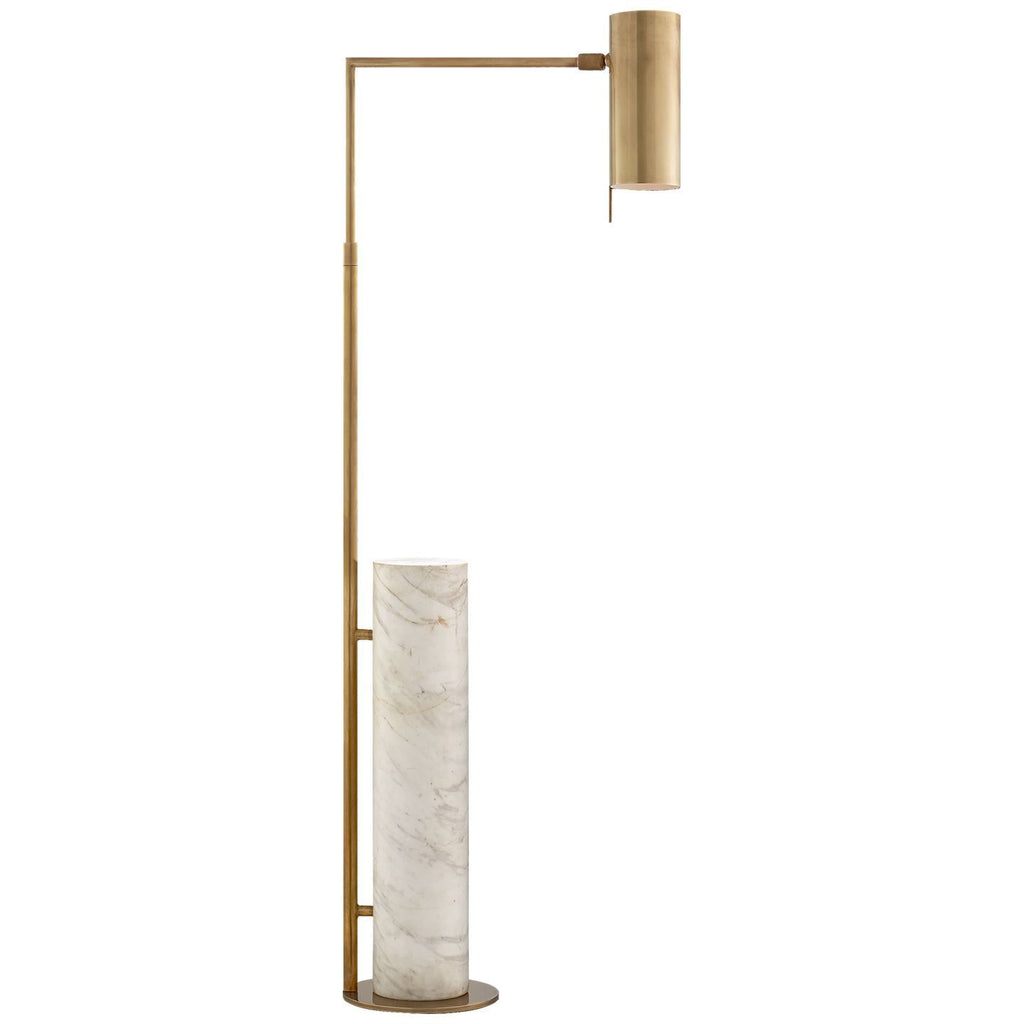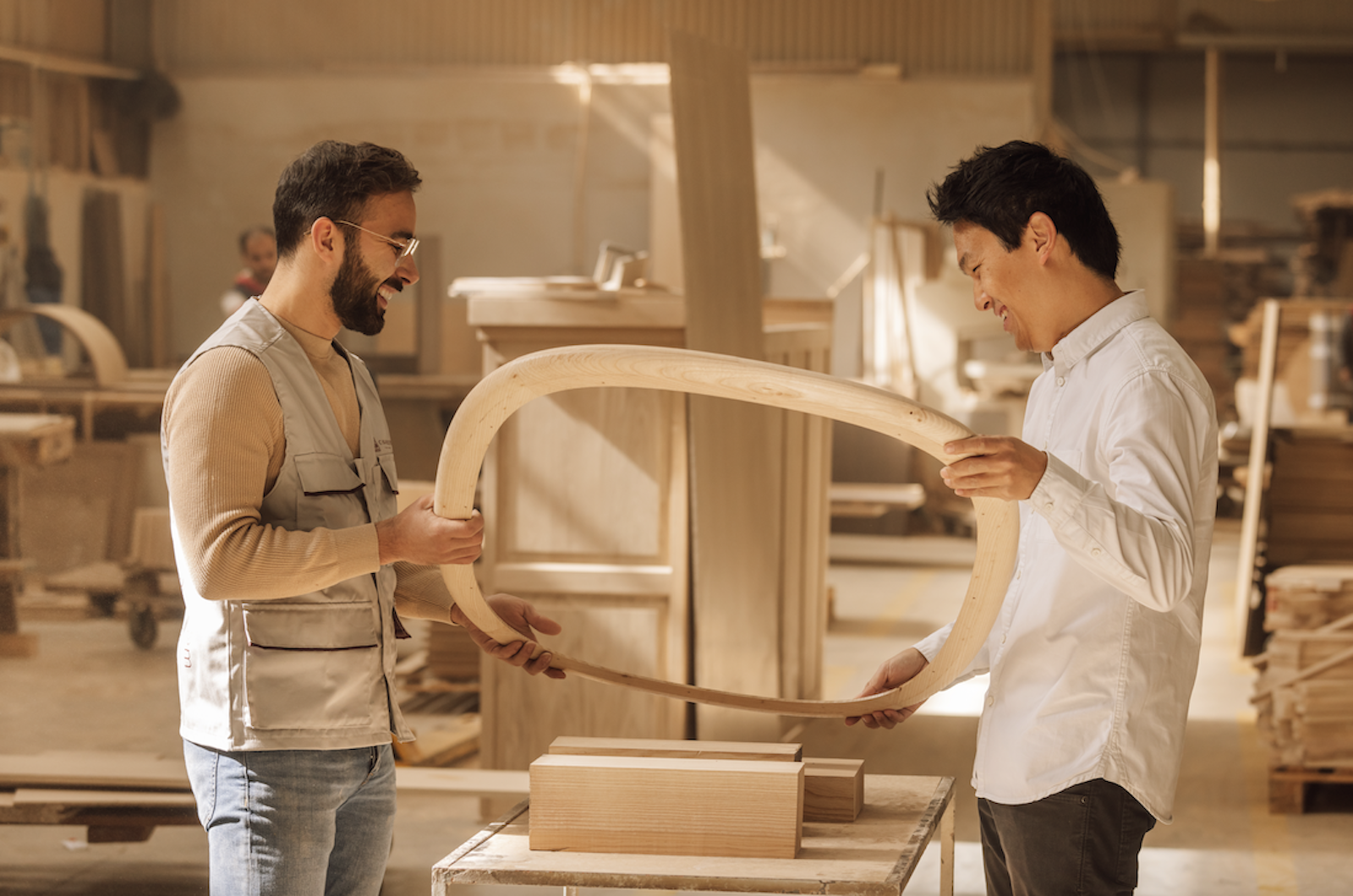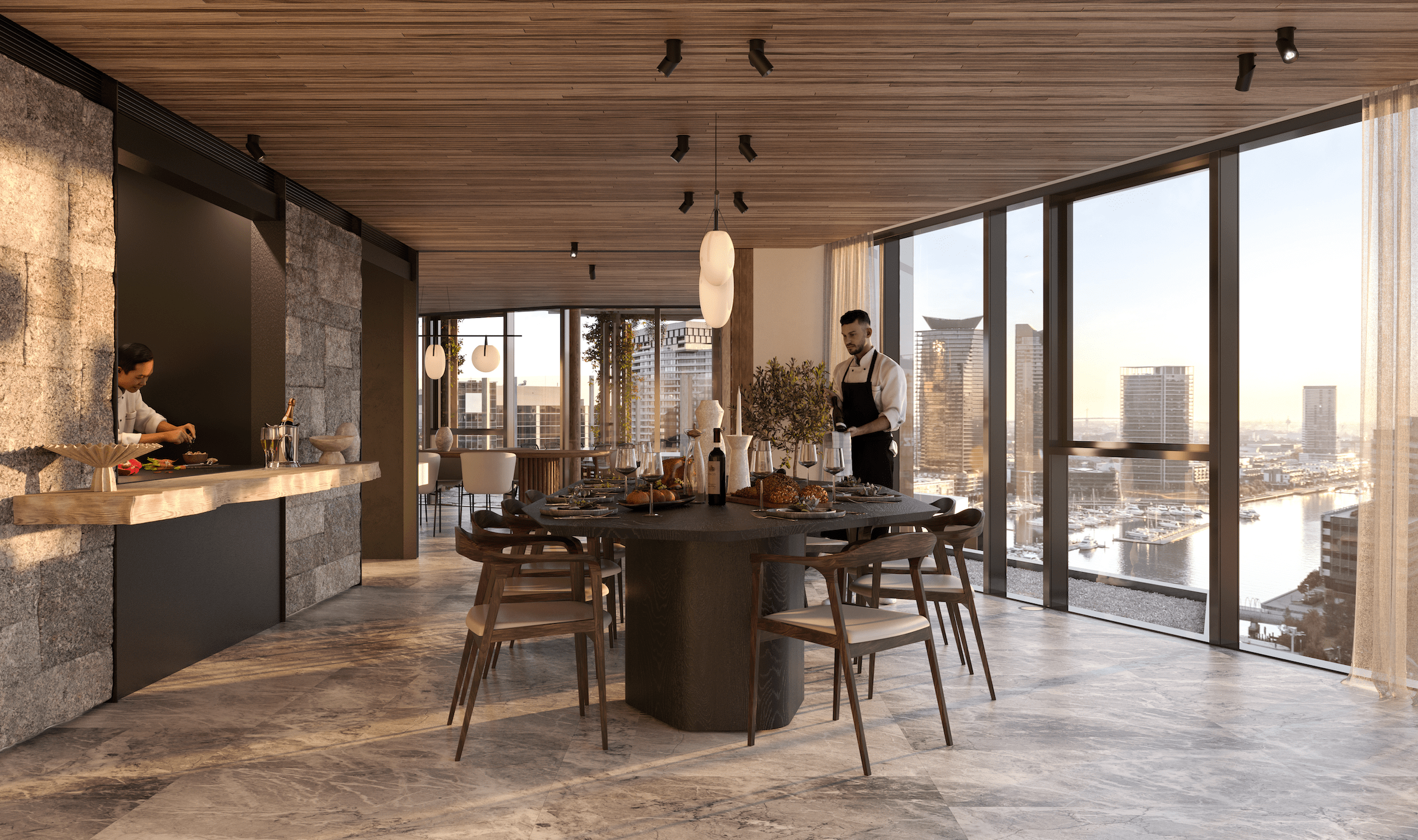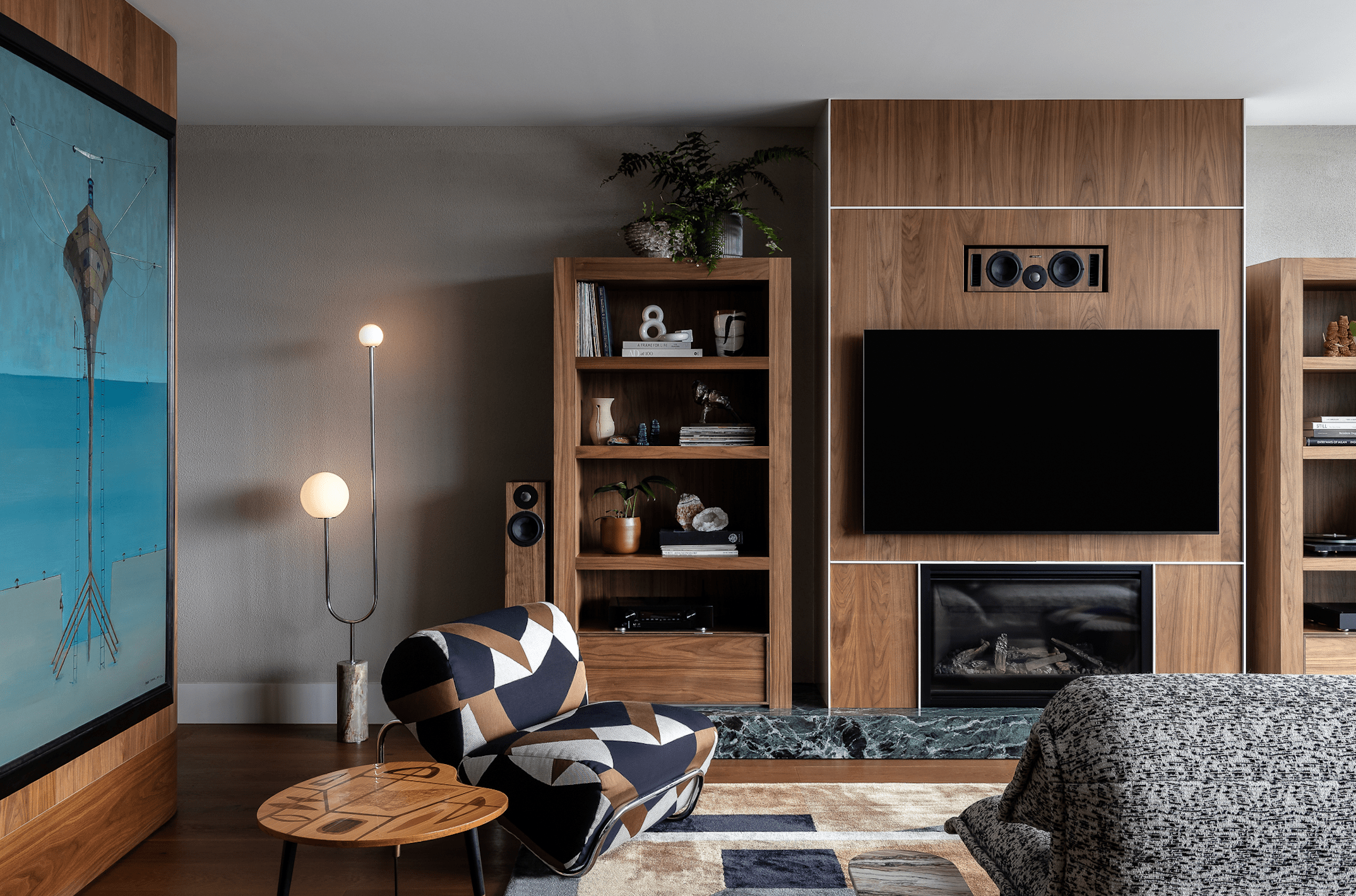It’s that time of year when getting off the lounge seems like way too much effort. Instead, a comfortable chair, a good book and a warm beverage beckon. Making sure your living space works, whether you’re looking to create zones within an open plan, or you want to read without straining your eyes, depends on your choice of lighting. As well as being up to the task to create mood and function, these floor lamps make a style statement. We’ve selected the best, from classic designs to timeless contemporary to ensure your living areas are inviting, as well as inspiring.
Tote Standing Lamp

The classic shapes of the Tote standing lamp by Tide Design have been given a clean, contemporary feel with the added warmth of natural timber. It’s the perfect shape for those who love tradition with a side of biophilic design. Available in three timbers, from $1,430 from Workshopped.
Foscarini Twiggy floor lamp

Made from coated fibreglass , coated metal and aluminium, the impossibly flexible Foscarini Twiggy floor lamp is ideal over lounges and cosy corners. From a design perspective, it breaks up strong lineal shapes associated with modular sofas. Plus, it creates pools of light perfect for zoning, $2,885 from Space.
Cliff 02 Lamp
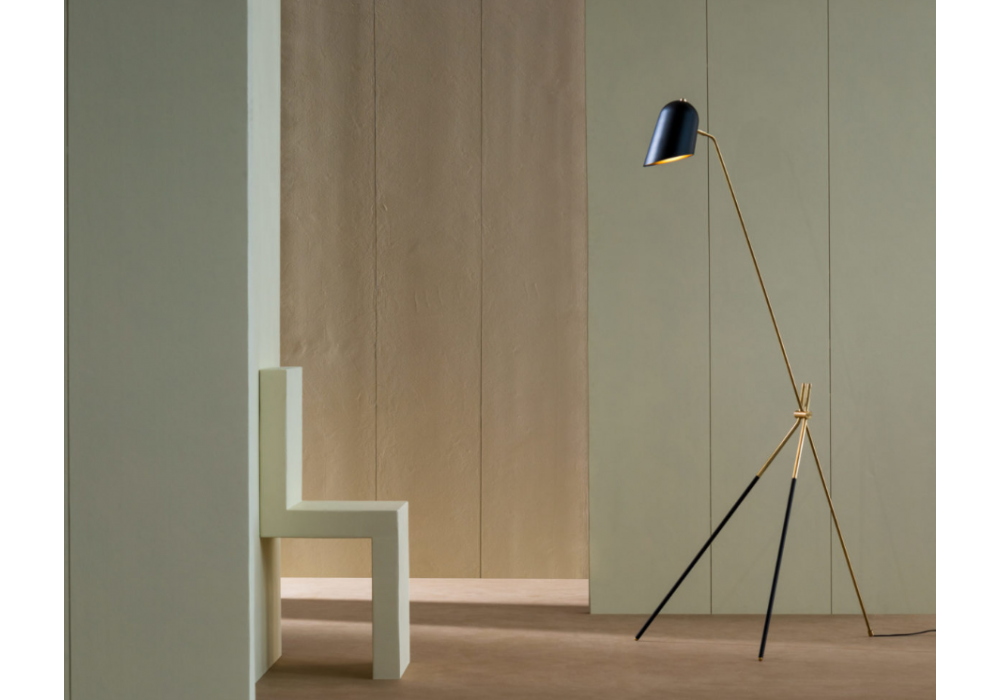
The tripod base of the brass and black matte Cliff 02 lamp from the Lambert & Fils workshop adds extra stability with a contemporary edge. A study in minimalism, the brass finishes deliver a jewel-like finish to the supporting rods, $4,380 from Living Edge.
Copenhagen SC14 Lamp

Perfect for creating visual warmth on cold nights, the Copenhagen SC14 lamp by &Tradition emits a soft ambient light with the control of a dimmer option and opal glass shade, $2,448 from Cult
Alma Lamp
US designer Kelly Wearstler’s stunning Alma lamp has the solidity of a white marble base and the allure of an antique burnished brass base. The cylindrical head of the pharmacy floor lamp can rotate 20 degrees left or right to best direct light, $2,079 from Montauk Lighting.
Tonone Bolt 2 Arm Floor Lamp
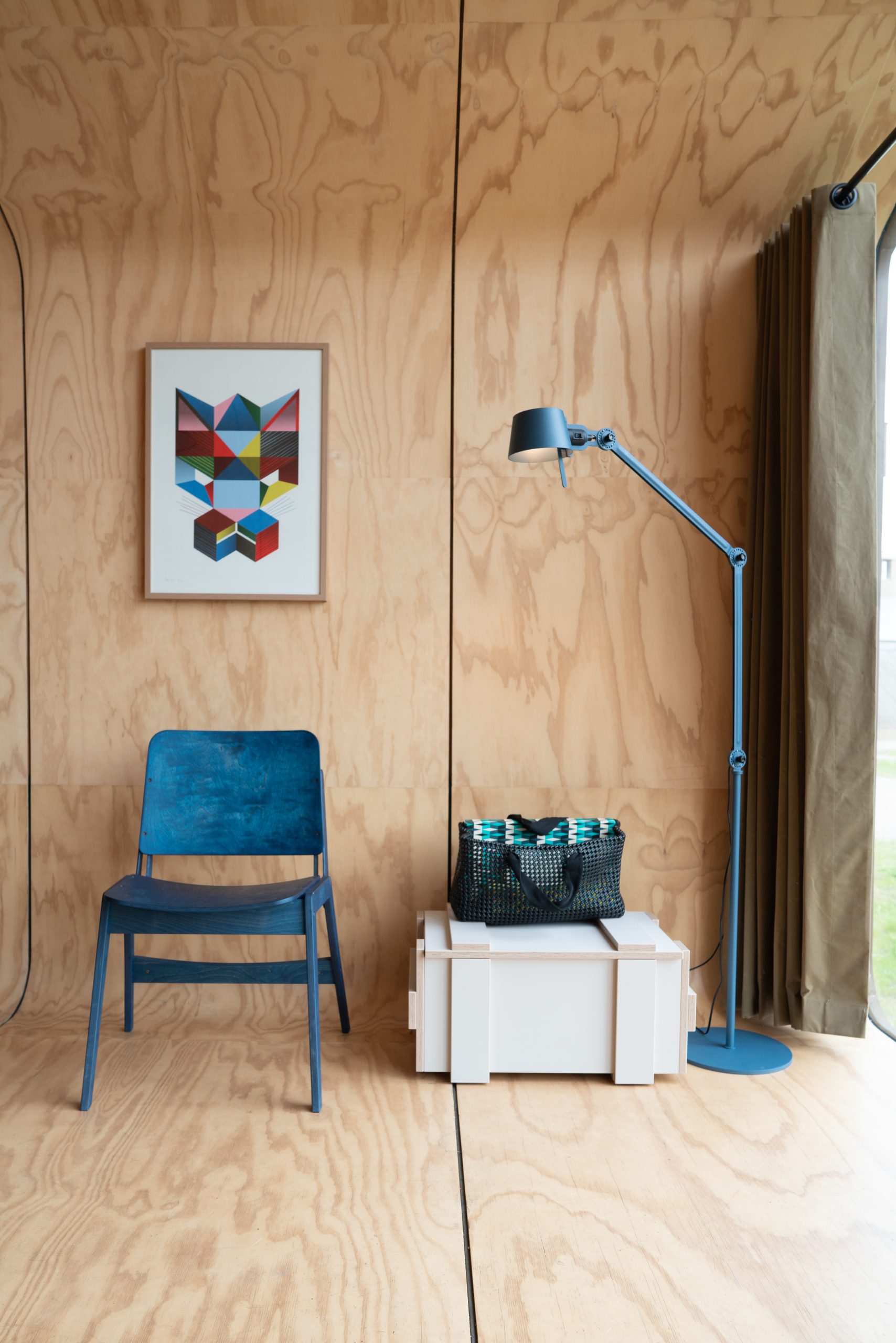
This lamp is right at home in any room in the house, from the living room to the kids’ bedrooms. Adjustable at two points to allow a change of height, as well as direction, it has a steel base and rods with an aluminium shade. It’s also available in a range of colours suitable for contemporary or traditional interiors, $1100 from Mondopiero.
What light is best for living room lamps?
Lamps are an ideal way to create a sense of warmth in your living room but it’s critical to choose the right light bulbs to avoid your spaces looking like a convenience store. The colour temperature of lights are measured in Kelvins, with 2700k-3000k considered warm and 4000k-5000k considered cool light.
How much should you spend on a floor lamp?
The good news is floor lamps are available at a wide range of price points. Like most furniture, however, you get what you pay for. Prices for a reasonably good floor lamp start from $200 up to $5000 or more. Ensure it has at least a 12-month warranty.
What type of floor lamp gives off the most light?
This will depend on the type of lightbulb you use, as well as the style of lamp shade. Light intensity is measured in lumens and watts. A standard 40w lightbulb emits 450 lumens, while a 60w bulb emits 800 lumens. LED (light emitting diodes) lights output the most light in the most energy efficient way. A wider lampshade design will allow the light to extend its reach.
Miles from home and in lockdown with family, the designer took inspiration for his new sofa from an unlikely source
While the rest of the world was hunkering down in 2020 as the reality of COVID set in, Gabriel Tan was moving house — halfway around the world.
The Singaporean designer and his heavily pregnant wife Cherie Er relocated with their five-year-old son to Porto, on the coast of Portugal. It was a bold move given Tan had an established studio in Singapore, but the couple decided it was worth the risk to be in the heart of the design centres in Europe and the US.
“It was difficult because we had a good business in Singapore and my wife had a really good job — she was running the Asia Pacific sales for Credit Suisse,” he says. “We threw everything in the basket and moved to Portugal.
“We decided that this design business has to work.”
For more stories like this, order your copy of Kanebridge Quarterly magazine here.
By the time Tan, who decided on a career in design while doing his national service in the navy, left for Portugal, he was already a name in Singapore and Japan, first with Outofstock, which he started with two friends, then his own studio before working with Japanese brand Ariake.
“I met them when they were still doing contract manufacturing and they were a local brand that wasn’t even known in Tokyo,” he says. “Originally the plan was just for me to design a few products for them. I told them that’s not going to move the needle for them if you are just going to add my products to your current collection so I suggested something more ambitious.
“I kind of appointed myself as the creative director.”
Origin story
The experience with Ariake spurred Tan onto build his own brand, Origin Made, designing products and taking on interior design projects, but he was keen to continue to extend himself.
Over time, living and working in a country of 5.5 million people was beginning to feel limiting.
With more of his time and attention being directed towards brands in Italy, Scandinavia and the United States, it made sense for Tan to make a permanent move to a location with easier access to Europe as well as North America. It was also an opportunity for a fresh start in design terms.
“I felt I was getting pigeon holed a little bit before COVID because people felt my work was very minimalist Japanese/Scandinavian, but it was because I was designing for Japanese clients,” he says. “When you work with a company, it is 50 percent them and 50 percent you. You bring part of yourself but at the same time, you can’t ignore the brand, their culture and their customers.”
Life in lockdown
Like much of the rest of the world, Portugal was in lockdown when Tan and Er arrived and their rental accommodation was not entirely comfortable for the family. As some work dried up in Singapore, Tan found himself with time to think.
“We were spending a lot of time in front of the TV and we were all wishing we had a more comfortable couch in our apartment,” he says.
“I was still waiting for my home to be finished construction so we were in a very uncomfortable spot.
“I really prioritised comfort when I was designing this sofa so I really went for it and tried to think ‘what is the craziest, most comfortable form we could get’.”
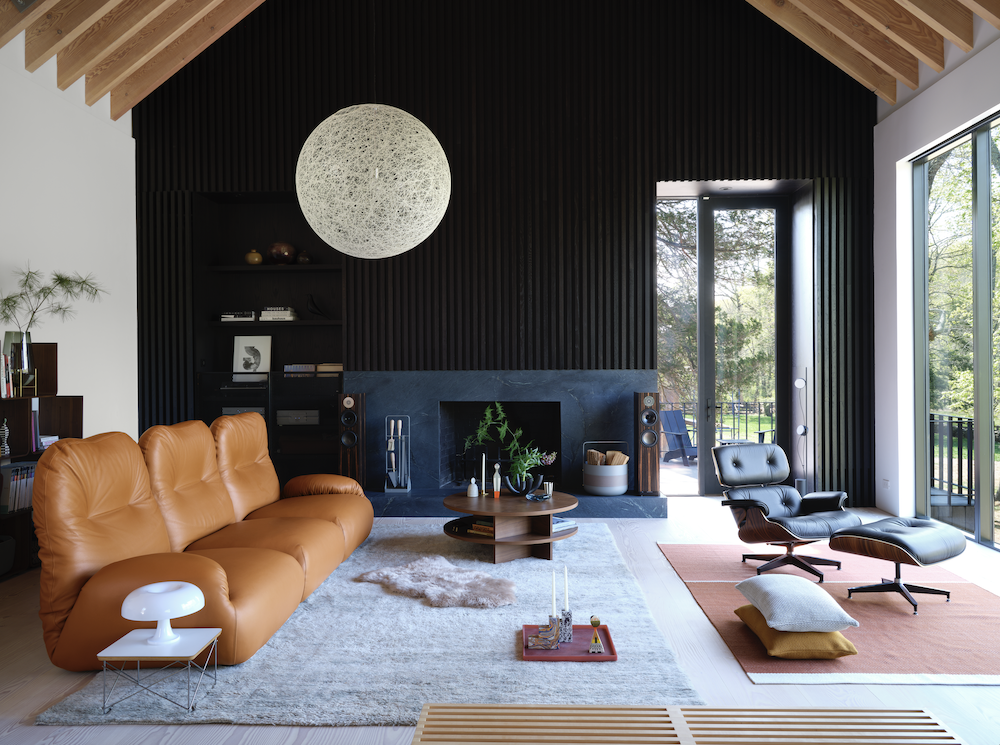
The sofa is the Luva (Portuguese for glove), a modular design taking its inspiration from Japanese futon beds and western boxing gloves. The backrest has the ability to extend for full lounging or to fold down to create a ‘fist’ for more support. It’s a deliberate attempt at cross cultural pollination.
“You have the eastern influence of the futon and the western sport of boxing and I tried to get an aesthetic that different cultures would be familiar with whether they are from Asia, Europe or the US,” he says. “You will find this shape is familiar to you and you will be naturally drawn to it.”
Build your own
While the lounge is in keeping with a contemporary aesthetic and comfort levels, it also embodies the practicality that is an integral part of Tan’s approach. Each piece is available individually, allowing the user to ‘build’ the lounge to suit their needs, whether they live in a large house or a small apartment.
“I have lived in apartments all my life,” he says. “You can see how narrow the stairwells can be, and you have to carry the sofa up.
“Whenever we are doing interior design for clients we know the consideration when you’re buying a sofa. If it’s modular, if you can get it through doorways and narrow hallways, it’s going to be much easier to convince the client to buy.”
It’s also a design that the user can add to over time, extending the usefulness and longevity of the sofa. Tan took it to product design director at Herman Miller, Noah Schwarz, who was quick to recognise its applications.
“He would often ask what I was working on so I showed him this sofa and immediately he was like ‘this could be something for us’,” says Tan.
“He thought it might be something for the MillerKnoll group but which brand he couldn’t tell yet.
“But he said ‘definitely don’t show it to other people’.”
The Luva has since been joined by the Cyclade tables, a trio of coffee and occasional tables designed to work equally well together or singularly. Other collaborations have followed, including work with major European brands such as B+B Italia, Menu, Abstracta and Design Within Reach while still maintaining his Singaporean office.
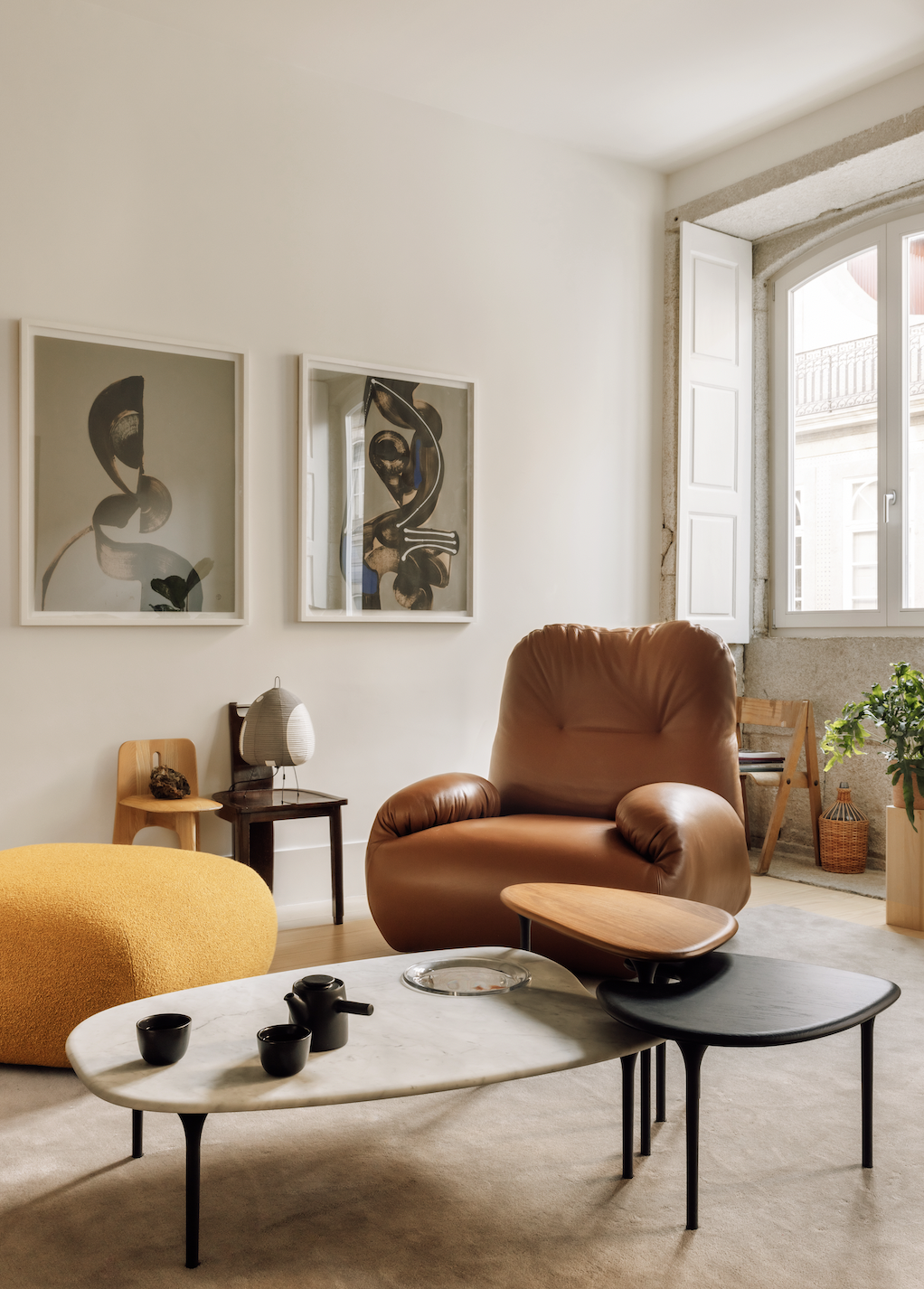
Cutting down travel times has meant more time on the ground.
“Here I travel quite a lot to meet with different companies I am working with and that helps because to me these distances are super short,” he says. “For designers living in Europe they might not want to go to Denmark because it’s a 3.5 hour flight but to me, even if I have to transit, five hours is no problem.”
Leap of faith
Although the move to Europe was risky, Tan has no regrets. While he admits his Portuguese is still a work in progress, his two sons (Er delivered a baby boy not long after arriving in Portugal) are quickly learning the language and the family has now moved into a traditional townhouse, which Tan has renovated, and where their office is based.
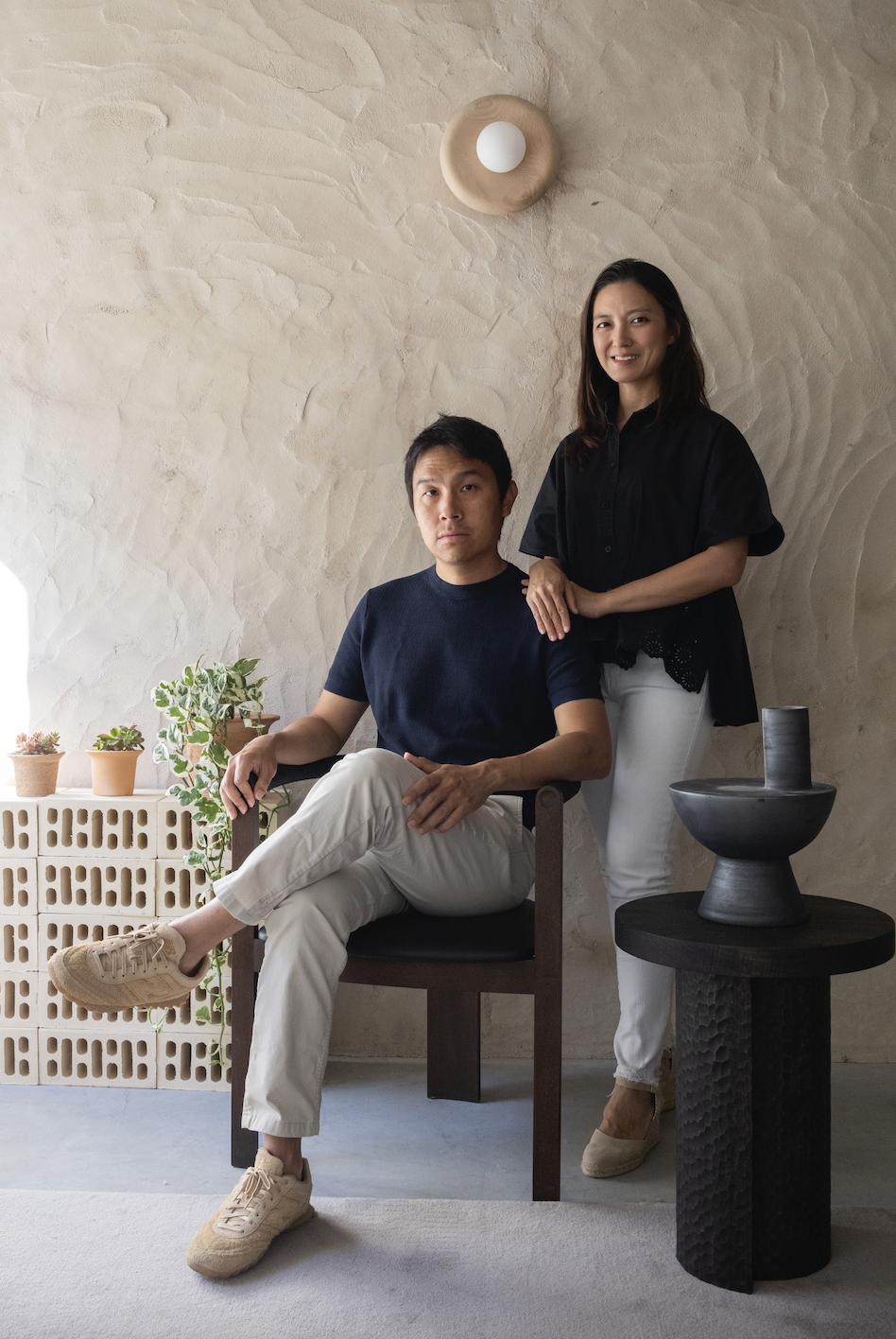
Being in the heart of Europe has opened up a world of opportunity for Tan that has been both invigorating and challenging.
“I am designing for companies of different countries and I get to learn more about other ways of life and how people from other countries see design and see their homes and their spaces and how people do business in different parts of the world,” he says. “Coming from Singapore, it can be very stifling because it is so small. It’s really such a joy to experience these different cultures through design collaborations.”
Moving away from family and friends was a leap of faith but it gave him the push he needed. For a designer whose work is all about comfort, he is not one taking the safe path and staying home.
“It’s a good business model for revenue but you are not going to leave a mark on design history, you are not going to touch the lives of that many people if you are working with regional brands,” he says. “I really wanted to work with the international brands that have the reach with customers worldwide and I think if I hadn’t moved I would not have had that clarity of mind and that focus to really go for it.”
Article originally published on Kanebridge News Australia






